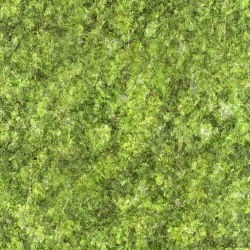Terrain Textures 01a - Vegetation and Humus (Tiled 512px)
These tiled, 512px terrain textures were originally created as mapmaking resources for the oldschool Bungie games Myth, Myth II, and (non-Bungie) Myth III. My hope is that they can be used for many other things as well.
Our mapmaking guild was called bloody mud, and was active from 2001-2005. All our mapmaking resources were created from scratch. Because Myth III in particular blended textures together, our textures were often a bit higher in contrast than others you may find, so as to bring out clear detail in a lower-res game.
This set is one of several Terrain Texture sets planned for submission. Sadly, the Vegetation and Humus set is the only one for which 512px tiles were completed: the rest will be more raw terrain texture sources for further adaptation.
Textures of each terrain type are similar in character and nature, because they were intended to blend and provide slight visual variety in harmony with one-another, rather than clash with one-another.
Although these resources were developed for other purposes, all my prior work is now being channeled into a CC BY-SA worldbuilding project called Vessel. Thus this project is included in my Attribution request, along with my name.
- aqaraza- http://vessel.cc














Comments
For historical purposes, here follow the original notes from a packaging of these as a Torque texture pack back in 2005.
Torque Terrain Pack 1 - the wholesignal workshop - 2005
These terrains and details are for use with the standard version of the Torque engine.
The set is actually a system for bringing great detail and subtlety to your terrains with minimal resources and engine tricks: much can be done simply by mixing a variety of terrains and detail tiles in different ways. Torque Terrain Pack 1 gives you the tools to do just this.
There are 2 main folders: /details and /terrains. /details contains the greyscale tiles which overlay an entire mission area; more about these in a bit. The /terrains folder gives you tiling color terrains, and these are the key to the Torque Terrain Pack system.
If you like, you can dive right in and use these textures however you wish, ignoring the suggestions below (I always write too much explanation anyway!). We have put a lot of thought into how real-world terrain works, however, and have developed the system below to help you bring maximum realism to your Torque worlds.
Thanks, and happy worldbuilding!
- the wholesignal workshop
Terrains
Terrains are organized into several types, based on the types of soil and coverage at work in the real world:
terrains:
01_vegetation_humus
02_mud_clay_silt
03_soil_sand
04_rubble_rocks_stones
The numbers are not at random; Vegetation tiles should go 'above' muds, which should go above sands. Rubble and rocks can be used as needed, and can be appropriate at many different scales.
In any given Torque mission, you have 6 slots to fill with terrains. In this system, we think of these as Primary (rightmost) and Secondary (leftmost) slots. The leftmost 3 should be picked from these folders, depending on your mission's environment. A Jungle environment might use 2 from Vegetation and 1 from Rubble or Mud. A desert would stick with Sand and Rubble.
We recommend that you use all 6 slots in each Mission to build a realistic setting. The other 3 will be for 'Secondary' bridging materials. Perhaps you have an area that is so heavily forested that you want a very similar but slightly different vegetation tile, to blend repeating patterns. We provide, in some cases, up to 6 (!) kindred tiles for any given terrain set! So, you will see Forest01a.png .. Forest01b.png .. etc; these are clues that you can use those tiles in any order with one-another, and they will blend completely together, all coming from the same texture source.
Notes
For maximum quality at reasonable size, these tiles are saved as maximum-quality jpgs. We archive textures as 24-bit pngs, but these turn out too large for in-game purposes. Still, we strive to create the highest quality textures possible: detail quality can always be minimized afterwards, but never regained once it is lost.
Even though the present Torque engine has no way to take advantage of higher-density terrain tiles, we have included tiles at 512 pixels square along with the identical 256 px tiles (which are the size the engine needs). We have done this to give you maximum value and to let you see the amount of detail in each tile for your own studies.
Sources: All texture-source imagery is derived from our own raw texture library, made of original material. If you are concerned about future use of these textures, know that we are allowing them to be used under the Creative Commons Attribution-ShareAlike License.